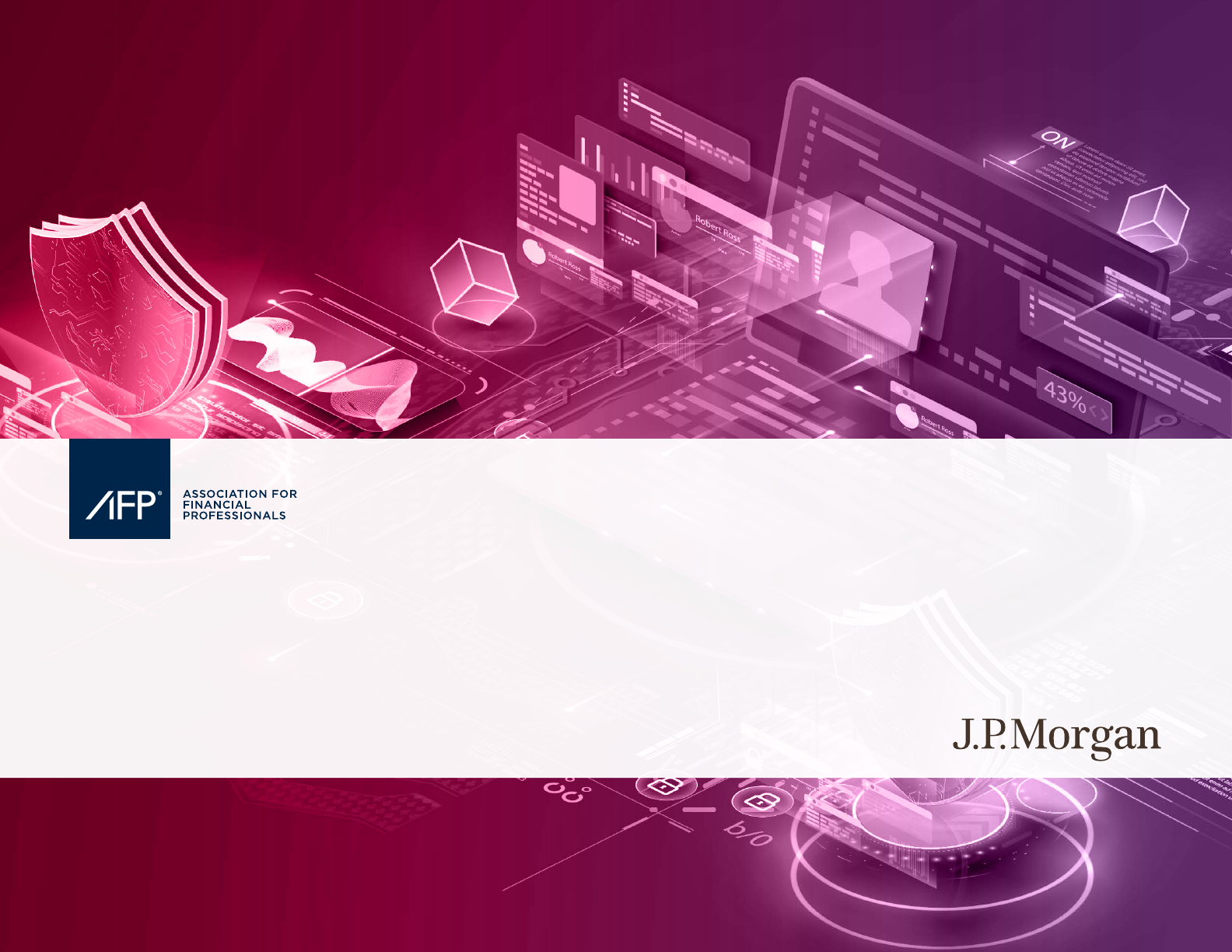
J.P.Morgan
2023 AFP®
PAYMENTS FRAUD AND
CONTROL SURVEY REPORT
KEY HIGHLIGHTS
This summary report includes highlights from the comprehensive 2023
AFP® Payments Fraud and Control Survey Report. The complete report
comprising all ndings and detailed analysis is exclusively available to
AFP members.
Learn more about AFP membership.
Underwritten by:
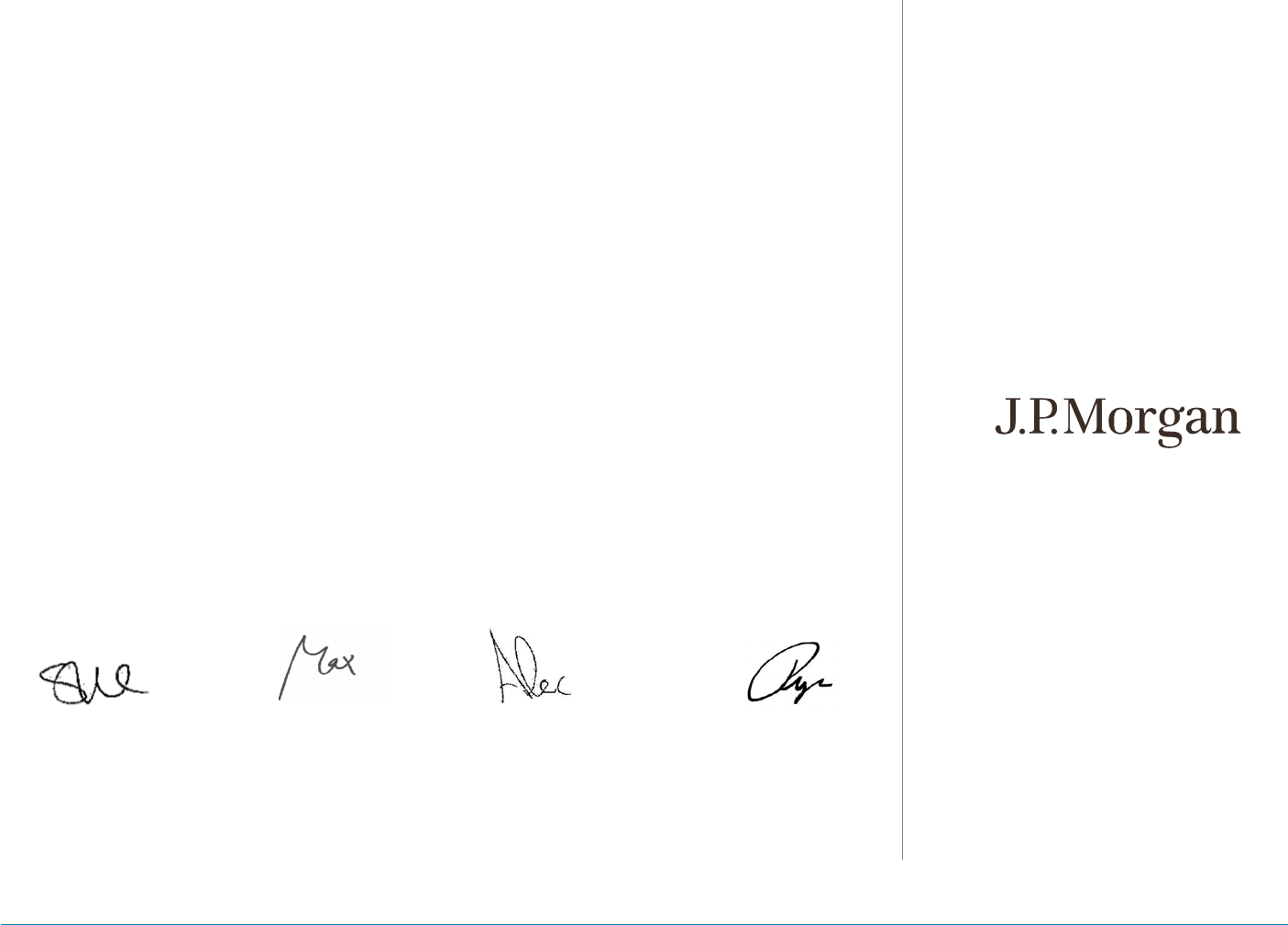
2023 AFP
®
Payments Fraud and Control Report | www.AFPonline.org 3
J.P.Morgan
We’re proud to share the results from the 2023 AFP Payments Fraud and Control survey. As a
sponsor of the survey for the last 15 years, J.P. Morgan is committed to helping organizations
protect themselves from payments fraud.
The latest survey shows that payments fraud is still a serious threat for every organization.
Instances of digital fraud are frequent across various fronts, with multiple schemes aimed at
relaxed controls.
Here are some highlights from the survey:
• The share of businesses that reported commercial card fraud has increased by 10
percentage points since 2021.
• The share of businesses that reported ACH Credit fraud has increased by six percentage
points over the same time frame.
• Fraudsters continue to impersonate employees and vendors through sophisticated business
email compromise schemes that are the root cause of most reported fraud cases.
• Checks are the payment method most vulnerable to fraud—a trend that has remained
consistent since the rst AFP survey.
• Still, three out of four organizations that use checks plan to keep using checks.
J.P. Morgan oers products and services that can help you manage your fraud risk in connection
with checks, wires, and ACH. We hope this report keeps you informed on the latest challenges
and encourages you to remain vigilant as ever.
With best regards,
Sue Dean
Max Neukirchen Alec Grant
Ryan Schmiedl
Head of Solutions,
Global Head of Head of Client Fraud
Global Head of
Commercial Banking
Payments & Commerce Prevention, & Recoveries,
Trust & Safety,
Solutions Commercial Banking,
Payments,
J.P. Morgan
J.P. Morgan
J.P. Morgan
J.P. Morgan

2023 AFP
®
Payments Fraud and Control Report | www.AFPonline.org 4
TOPICS COVERED IN THE COMPREHENSIVE 2023 AFP® PAYMENTS
FRAUD AND CONTROL SURVEY REPORT
PAYMENTS FRAUD ACTIVITY
— Payments Fraud Trends
— Payment Methods Impacted by Payments Fraud
— Corporate/Commercial Card Fraud
— Losses Incurred Due to Payments Fraud Attempts/Attacks
— Detecting Payments Fraud Activity
— Recouping of Funds
— Origination of Attempted/Actual Payments Fraud
BUSINESS EMAIL COMPROMISE (BEC)
— About Business Email Compromise
— Business Email Compromise Trends
— Financial Impact of Business Email Compromise
— Financial Losses Incurred Due to Business Email Compromise
— Targets of Business Email Compromise Scams
— Departments Most Susceptible to Business Email
Compromise Fraud
PAYMENTS FRAUD CONTROLS
— Business Email Compromise Controls
— Check Fraud Controls
— ACH Fraud Controls
— Implementing Risks to curb Fraud via Faster Payments
— Beneciary Validation
— Fraud Review
— Measures to Improve Controls

2023 AFP
®
Payments Fraud and Control Report | www.AFPonline.org 5
INTRODUCTION
As 2021 came to a close, organizations were
slowly returning to some level of normalcy as
the severity of the impact of COVID-19 began
to diminish. However, the spread of the highly
contagious Omicron variant upended those
plans during the rst few months of 2022. Once
that threat subsided, business leaders were
quick to focus on ramping up operations. But
there were challenges, including a sudden and
severe shortage of personnel in the workforce
and a tight job market. Organizations found it
dicult to ll open positions. Employees had
the upper hand, and they were being swayed
by higher compensation and benets from
other employers. A consequence was that
people were resigning from their jobs in droves,
resulting in a global phenomenon known as the
“Great Resignation.”
In February of 2022, Russia attacked Ukraine.
Sanctions imposed on Russia by many western
countries resulted in a very tense global
situation. This created instability and fuel
prices rose precipitously. Ination rates rose
to the highest levels in decades, and the cost
of groceries, rent, fuel and other household
items were skyrocketing. As a consequence,
the Federal Reserve took action to control
the rising ination by increasing interest rates
7 times in 2022; it is anticipated there will be
more rate increases in 2023.
With rising interest rates, the fear of a recession
loomed over the economy. Tech companies
began mass layos creating a sense of
uncertainty and fear that organizations in
other industries might follow suit. To address
challenges in the work environment, many
companies oered employees hybrid work
arrangements, requiring that employees come
into their oces only a few times a week or
month. Some organizations mandated that
employees return to oces, but that was –
and continues to be – met with resistance.
Other organizations chose to remain “virtual”
permanently.
With the major threat of COVID-19 now
abated, many businesses are functioning
at pre-pandemic levels. During COVID-19,
payment systems were put to the test of
operating in an all-virtual environment. With
minimal preparation, companies had to make
and receive payments while operating in an
environment drastically dierent from the usual
norm. 2022 saw a large increase in brazen and
successful attempts at stealing mail from post
oce boxes: i.e., the blue boxes typically found
on street corners. Perpetrators of these crimes
replicated keys to mailboxes and stole mail. Mail
was then opened, and payments containing
checks (government, business, personal, etc.)
were washed and check amounts and names
of payees altered. These checks were then
endorsed and deposited into accounts with a
short life. FinCen recently issued a warning to
nancial institutions about this type of fraud
1
.
This type of fraud is low-tech (being paper
based) and low cost, and so is an attractive
method for fraudsters. Postal Inspectors are
overworked with cases of this type of fraud,
and perpetrators are able to get away with few
repercussions. To address this trend, treasury
and nance professionals worked on equipping
their organizations to tackle the risk of fraud
in this new scenario. Stringent controls were
put in place to curb fraud attacks on payment
systems. This appears to have been eective
in curbing instances of widespread payments
1
FinCEN Alert on Nationwide Surge in Mail Theft-Related Check Fraud Schemes Targeting the U.S. Mail | FinCEN.gov

2023 AFP
®
Payments Fraud and Control Report | www.AFPonline.org 6
INTRODUCTION (Continued)
fraud. Additionally, the use of checks, a
common target of perpetrators, has declined
considerably, preventing fraudsters from doing
further harm using checks as a means to
perpetrate fraud.
Every year since 2005, the Association
for Financial Professionals® (AFP) has
conducted its Payments Fraud Survey. The
surveys examine the nature of fraud attacks
on business-to-business transactions,
the payment methods impacted, and the
strategies organizations are adopting to
protect themselves from those committing
payments fraud. Continuing this research, AFP
conducted the 19th Annual Payments Fraud
and Control Survey in January 2023. The
survey generated 471 responses from corporate
practitioners from organizations of varying
sizes representing a broad range of industries.
Results presented in this report reect data for
2022. Survey respondent demographics are
available at the end of this report.
AFP thanks J.P. Morgan for its continued
underwriting support of the AFP Payments
Fraud and Control Survey series. Both
questionnaire design and the nal report, along
with its content and conclusions, are the sole
responsibility of AFP’s Research Department.
“Attempted fraud
was discovered by
our supplier setup
team calling an
established vendor
and conrming they
had not changed
banks, as per the
email we received.”

2023 AFP
®
Payments Fraud and Control Report | www.AFPonline.org 7
KEY FINDINGS
Overall, attempted or actual payments fraud
in 2022 was lower compared to that in recent years.
Sixty-ve percent of respondents indicate that their organizations were
victims of either attempted or actual fraud
activity in 2022 – the smallest percentage since 2014.
Instances of fraud via digital
payment methods have risen
since 2021.
Commercial card fraud increased
by 10 percentage points in 2022,
fraud via ACH credits was up by
6 percentage points and fraud
via virtual cards also increased
by 6 percentage points during
the same time frame.
Twenty-seven percent
of organizations were
able to successfully
recover at least 75 percent
of funds lost due to
payments fraud in 2022,
while 44 percent were
unsuccessful in doing so.
Over half of organizations
with annual revenue of less
than $1 billion were unable
to recover funds lost due to
payments fraud attacks.
Business Email Compromise (BEC) scams
are still highly prevalent and are the root
cause of payments fraud at a majority
of organizations. Seventy-one percent of
companies were victims of payments
fraud via email in 2022.
Larger organizations with annual revenue of at least $1 billion were
more susceptible to BEC scams, while those companies with less
than $1 billion in annual revenue were more susceptible to fraud
committed by individuals outside their organizations.
Payment methods used during BEC attempts included
wires, cited by 45 percent of respondents (the highest
percentage in the past five years) and ACH debits.
Fraudsters are increasingly targeting ACH debits when
attempting scams via email.
Nearly 80 percent of organizations are most likely
to seek assistance from their banking partners for
guidance regarding the steps to take to minimize
the impact of payments fraud.
Sixty-nine percent inform the security/compliance team
at their organizations.
Checks continue to be the payment method most vulnerable to fraud.
Sixty-three percent of respondents report that their organizations faced fraud
activity via checks. Three-fourths of organizations currently using checks do not plan
to discontinue issuing checks.
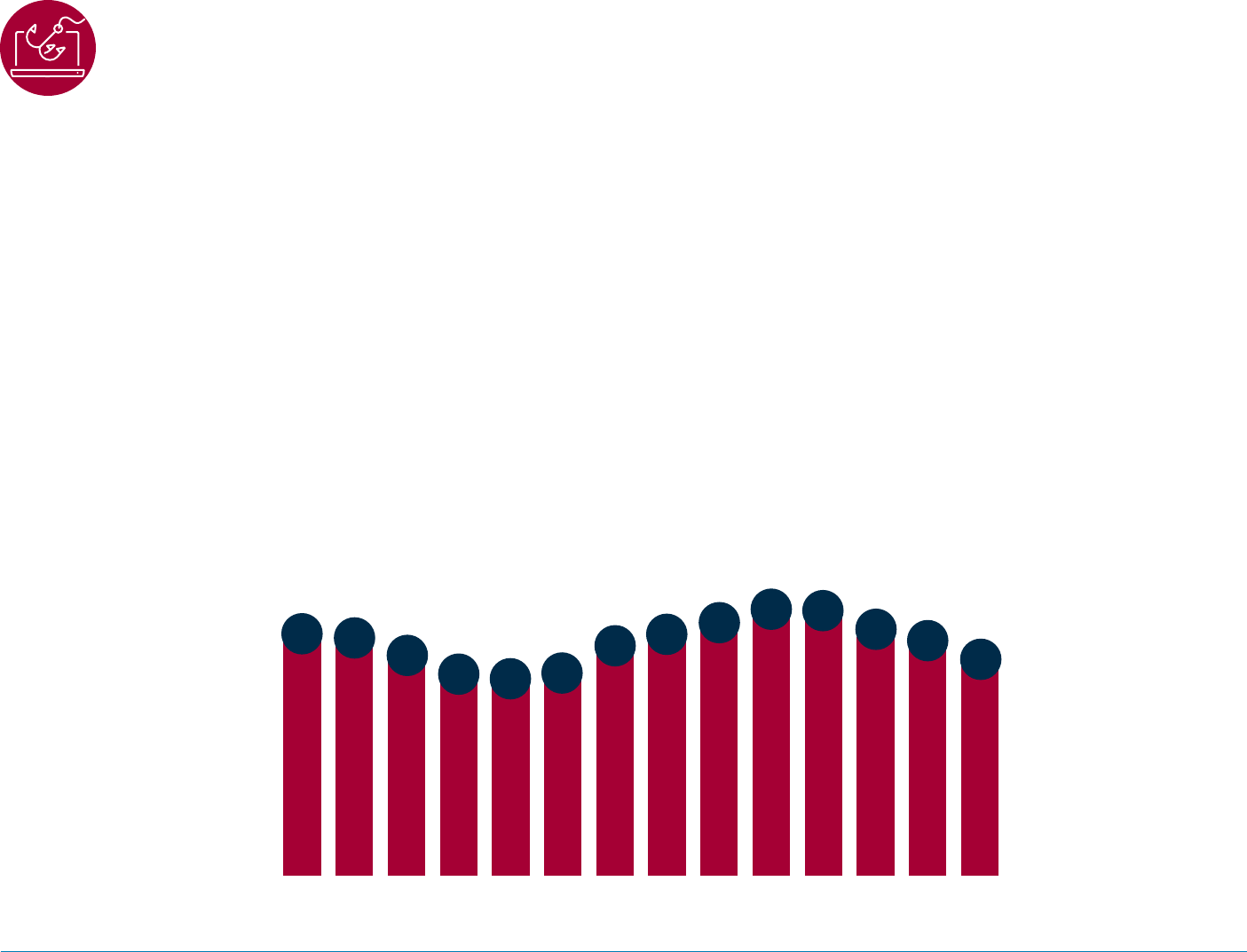
2023 AFP
®
Payments Fraud and Control Report | www.AFPonline.org 8
•
PAYMENTS FRAUD ACTIVITY IN 2022
Fewer Organizations Report Being Targets of a Payments Fraud Attack in 2022
From 2009-2013, organizations experienced a
decline in payments fraud activity. Sixty percent
of respondents reported instances of fraud at
their organizations in 2013. Then the pendulum
swung the other way and there was an uptick in
fraud activity between 2014-2018. In 2018 and
2019 payments fraud activity was widespread
with over 80 percent of organizations falling
prey to the tactics of fraudsters.
Since then, there has been a decrease in
the percentage of treasury professionals
reporting that their organizations had been
targets of a fraud attack. Fortunately, this
downward trend activity continued in 2022;
65 percent of organizations were victims of
either attempted or actual fraud activity – the
smallest percentage since 2014. Although this
gure is lower than fraud reported in recent
years, it is still a signicant share with two out
of three companies continuing to be victims of
fraud attacks.
A greater share of survey respondents from
larger organizations and those with more
payment accounts – i.e., those with annual
revenue of at least $1 billion and with more
than 100 payment accounts – reports their
rms experienced payments fraud in 2022
compared with the share of respondents from
other organizations. Eighty-four percent of
these organizations were targets of payments
fraud. Fewer smaller organizations – those
with annual revenue less than $1 billion – were
targets of payments fraud in 2022 than were
larger organizations (with annual revenue
of at least $1 billion): 60 percent compared
to 78 percent, respectively. Fraudsters were
more inclined to target larger organizations,
exposing deciencies around process controls
using social engineering.
Percent of Organizations That Were Victims of Payments Fraud Attacks/Attempts
73%
71%
68%
61%
60%
62%
73%
74%
78%
82%
81%
74%
71%
65%
2009
2010
2011 2012
2013
2014
2015
2016
2017
2018
2019 2020
2021 2022
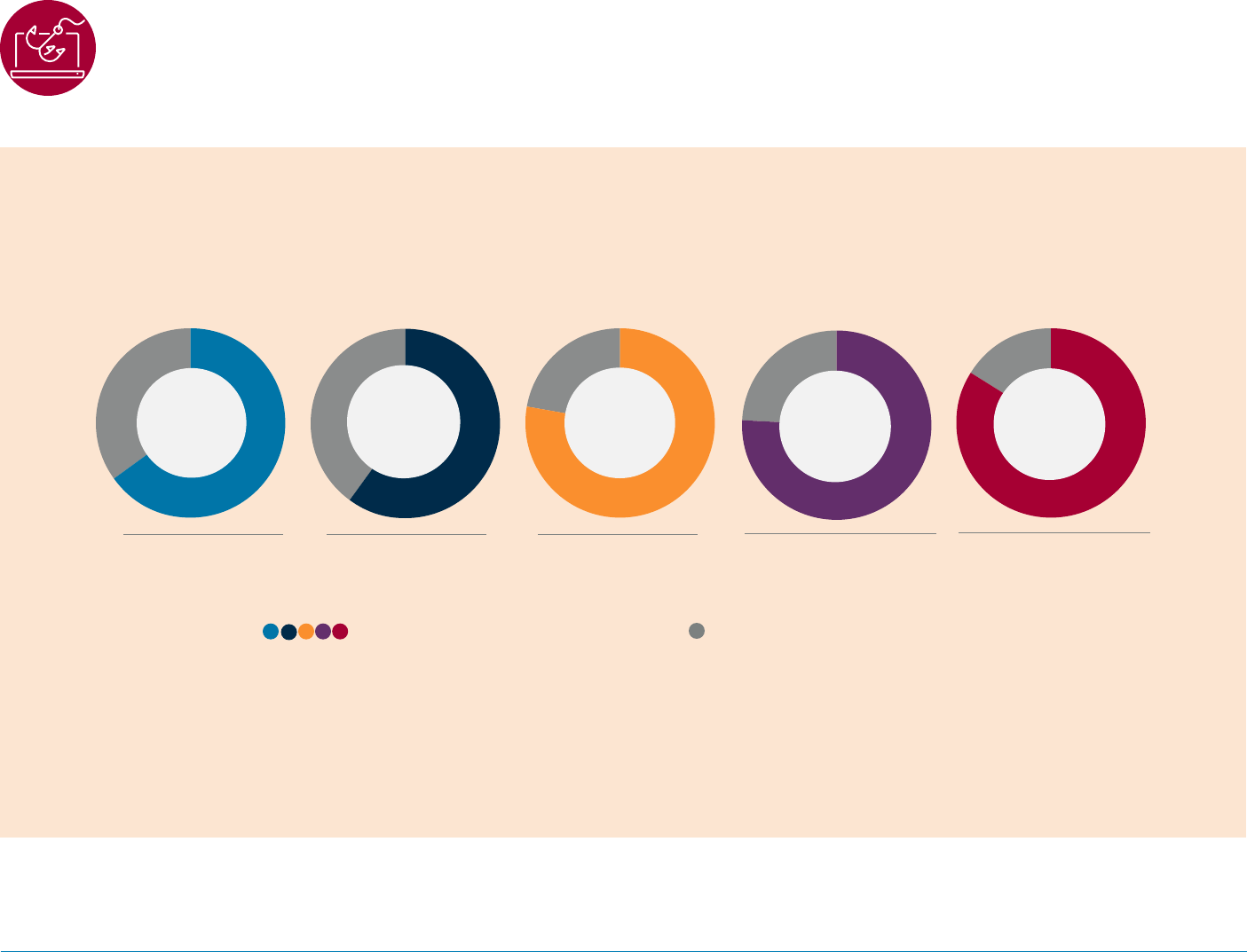
2023 AFP
®
Payments Fraud and Control Report | www.AFPonline.org 9
•
• •••
•
PAYMENTS FRAUD ACTIVITY IN 2022
Prevalence of Attempted/Actual Payments Fraud in 2022
(Percentage Distribution of Organizations)
65% 60%
78%
84%
76%
All
Annual Revenue Less
Than $1 Billion
Annual Revenue
At Least $1 Billion
Annual Revenue At Least
$1 Billion and Fewer Than 26
Payment Accounts
Annual Revenue At Least
$1 Billion and More Than
100 Payment Accounts
Yes, my organization was a victim
of attempted or actual payments fraud
No, my organization was not a victim of
attempted or actual payments fraud
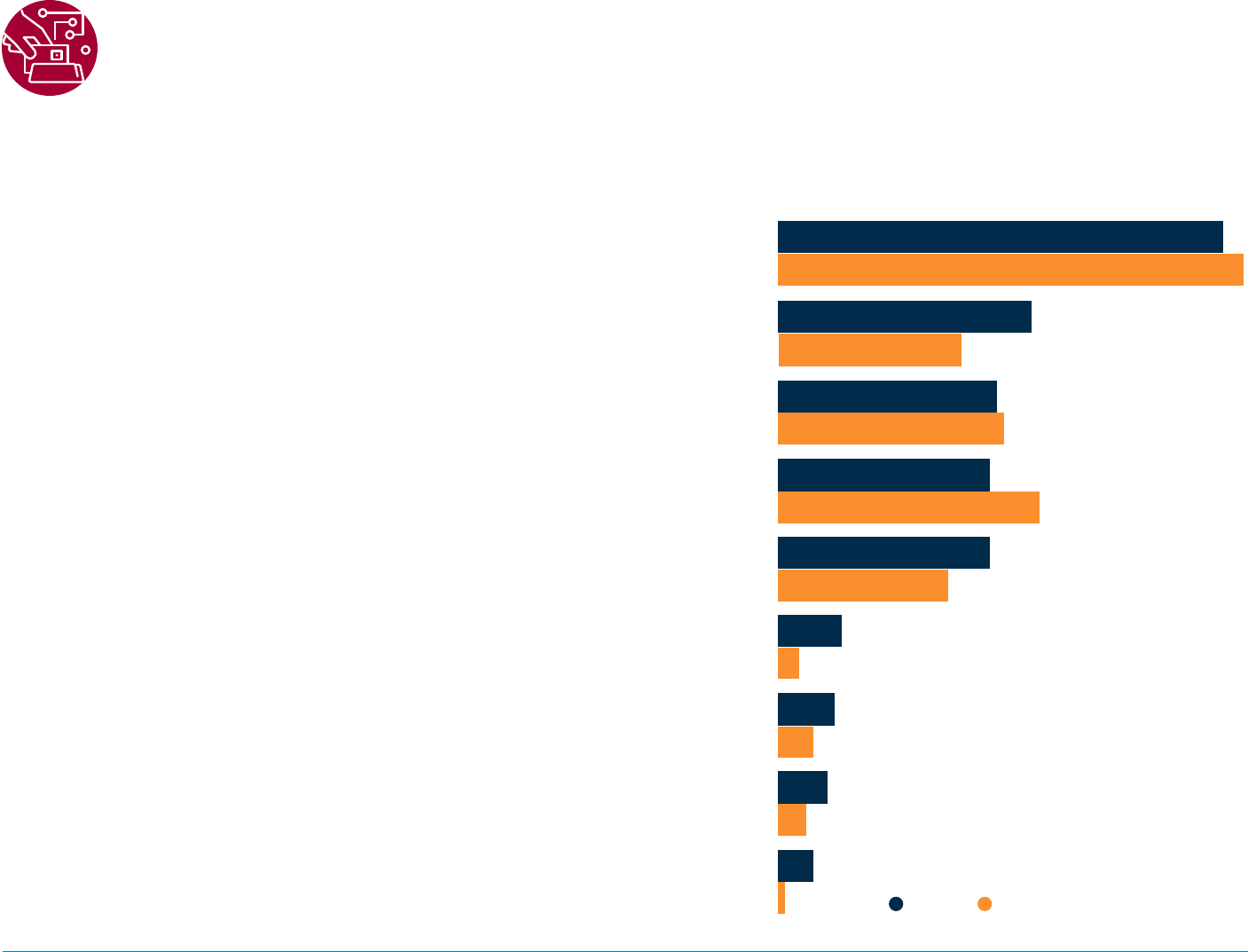
2023 AFP
®
Payments Fraud and Control Report | www.AFPonline.org 10
•
-
-
-
■
• •
PAYMENT METHODS MOST VULNERABLE TO FRAUD
Checks Continue to be Most
Vulnerable to Payments Fraud
In 2022, checks continued to be the payment
method impacted most often by fraud activity;
63 percent of respondents report that their
organizations faced some kind of check fraud
activity, attempted or actual. Payments fraud
via checks had been on the decline since 2010,
with some intermittent upticks in between.
Seventy percent of nancial professionals
reported that their organizations’ check
payments were subject to fraud attempts/attacks
in 2018, while 74 percent reported the same for
2019. We then saw a decrease to 66 percent in
2020 and it remained unchanged in 2021.
“We had a washed
check and relied on our
bank to track down the
errant payee.
”
Payment Methods Subject to Fraud by Type
(Percent of Organizations)
Checks
63%
66%
Corporate/commercial credit cards
26%
36%
Wire transfers
31%
32%
ACH debits
30%
37%
ACH credits
30%
24%
Virtual cards
3%
9%
Faster payments
8%
5%
Mobile wallets
7%
4%
Cryptocurrency (Bitcoin, Ethereum, etc.)
5%
1%
2022 2021

2023 AFP
®
Payments Fraud and Control Report | www.AFPonline.org 11
•
••
•
~
PAYMENT METHODS MOST VULNERABLE TO FRAUD
Contributing to the decline in check fraud is the
fact that organizations are using fewer checks
in their business-to-business (B2B) transactions
and an increase in digital payments. According
to the 2022 AFP® Electronic Payments Report,
33 percent of organizations used checks for
B2B payments in 2022, while in 2004 over
80 percent of companies used checks for
similar transactions.
The share of organizations that were victims
of fraud attacks via wire transfers has also
been decreasing – from 48 percent in 2017
to 32 percent in 2021 and 31 percent in 2022.
Companies are more ecient in detecting
potential fraud and mitigating it appropriately.
Results suggest a clear downward trend in
wire fraud activity, indicating that the controls
companies are putting in place to prevent
wire fraud are eective. Fraudsters often use
wires to inltrate an organization’s payment
systems using email, and because in recent
years companies have bolstered their eorts
to control fraud via email – i.e., Business Email
Compromise (BEC) – those eorts have
contributed to a decrease in instances of
wire fraud.
The share of respondents reporting fraud via
ACH debits decreased from 37 percent in 2021
to 30 percent in 2022. The percentage of fraud
activity via ACH debits had been increasing
gradually – from 33 percent in 2019 to 34
percent in 2020 and to 37 percent in 2021.
Time will tell whether the recent decline is the
beginning of a trend or not. Potential reasons
for the decline possibly include businesses
having stronger procedures and tools in place,
including the use of debit lters, debit blocks,
etc. Also, as more payments move to digital
channels, the stronger processes around
ACH debits might have helped to reduce the
incidence of fraud.
Fraud via ACH credits rose 6 percentage points
from 2021 to 30 percent in 2022. In 2019 fraud
via ACH credits accounted for 22 percent
of fraud activity, then decreased slightly to
19 percent in 2020 before rising again to 24
percent in 2021 and to 30 percent in 2022.
As companies move from paper to digital
payment methods, the origination point of ACH
credits needs further review around processes,
controls and procedures. Dual approvals and
proper payment backup/detail protocols should
parallel those for other payment channels
such as wires, Real Time Payments and Same
Day ACH. In addition, organizations should
continually educate their employees on how to
protect their payment systems from fraudsters.
Apart from fraud via checks, wire transfers and
ACH credits, attacks via corporate/commercial
credit cards, faster payments, virtual cards,
cryptocurrency and mobile wallets have
increased from 2021 to 2022. The percentage
of organization that were victims of fraud
attacks via corporate/commercial credit cards
rose from 26 percent to 36 percent in 2022,
fraud attacks via faster payments increased
from 5 percent to 8 percent and fraud attacks
via cryptocurrency rose from one percent to
ve percent.

2023 AFP
®
Payments Fraud and Control Report | www.AFPonline.org 12
ASSISTANCE SOUGHT WHEN REPORTING PAYMENTS FRAUD
Banking Partners Often Sought Out for Assistance in Process to Report
Payments Fraud
When looking to report payments fraud,
79 percent of respondents indicate their
organizations are most likely to seek
assistance from their banking partners to
receive guidance about the steps to take to
minimize the impact from such fraud. Since
banking partners are increasingly being
sought out for guidance, practitioners should
ensure that when selecting banking partners
those partners have experience in dealing
with payments fraud and so will be able to
help organizations when the need arises. If
changing banks, it is a good practice for a
company to incorporate a “fraud checkup” into
the RFP as a requirement including requesting
demos of fraud solutions for each payment
type, how exceptions are handled, timing to
action exceptions, and setting defaults to
”not pay” if deadlines are missed. Sixty-nine
percent of respondents report they would
inform the security/compliance team at
their organizations; this action is taken more
frequently at larger organizations with annual
revenue of at least $1 billion (74 percent) than
at those rms with annual revenue of less than
$1 billion (59 percent). Other steps being taken
when reporting fraud are:
— File report with police (local, state,
or federal) (cited by 38 percent of
respondents)
— Inform law enforcement agencies (e.g.,
FBI) (35 percent)
— Inform the Federal Trade Commission
(FTC) (6 percent)

2023 AFP
®
Payments Fraud and Control Report | www.AFPonline.org 13
ASSISTANCE SOUGHT WHEN REPORTING PAYMENTS FRAUD
Process Used to Report Payments Fraud in 2022
(Percent of Organizations)
All
Annual Revenue
Less Than $1 Billion
Annual Revenue
At Least $1 Billion
Annual Revenue At
Least $1 Billion
and Fewer Than 26
Payment Accounts
Annual Revenue At
Least $1 Billion
and More Than 100
Payment Accounts
Seek assistance from our banking partner 79% 73% 84% 87% 78%
Inform internal security/compliance team 69% 59% 74% 72% 78%
File report with police (local, state or federal) 38% 30% 45% 44% 41%
Inform law enforcement agencies (e.g., FBI) 35% 30% 43% 44% 41%
Inform the Federal Trade Commission (FTC) 6% 6% 6% 7% 7%
Other
• File police report in targeted country
(when outside of the U.S.)
• File a claim with Postmaster General’s oce
• Depends on the fraud
• File a Suspicious Activity Report (SAR)
4% 6% 3% 1% 4%
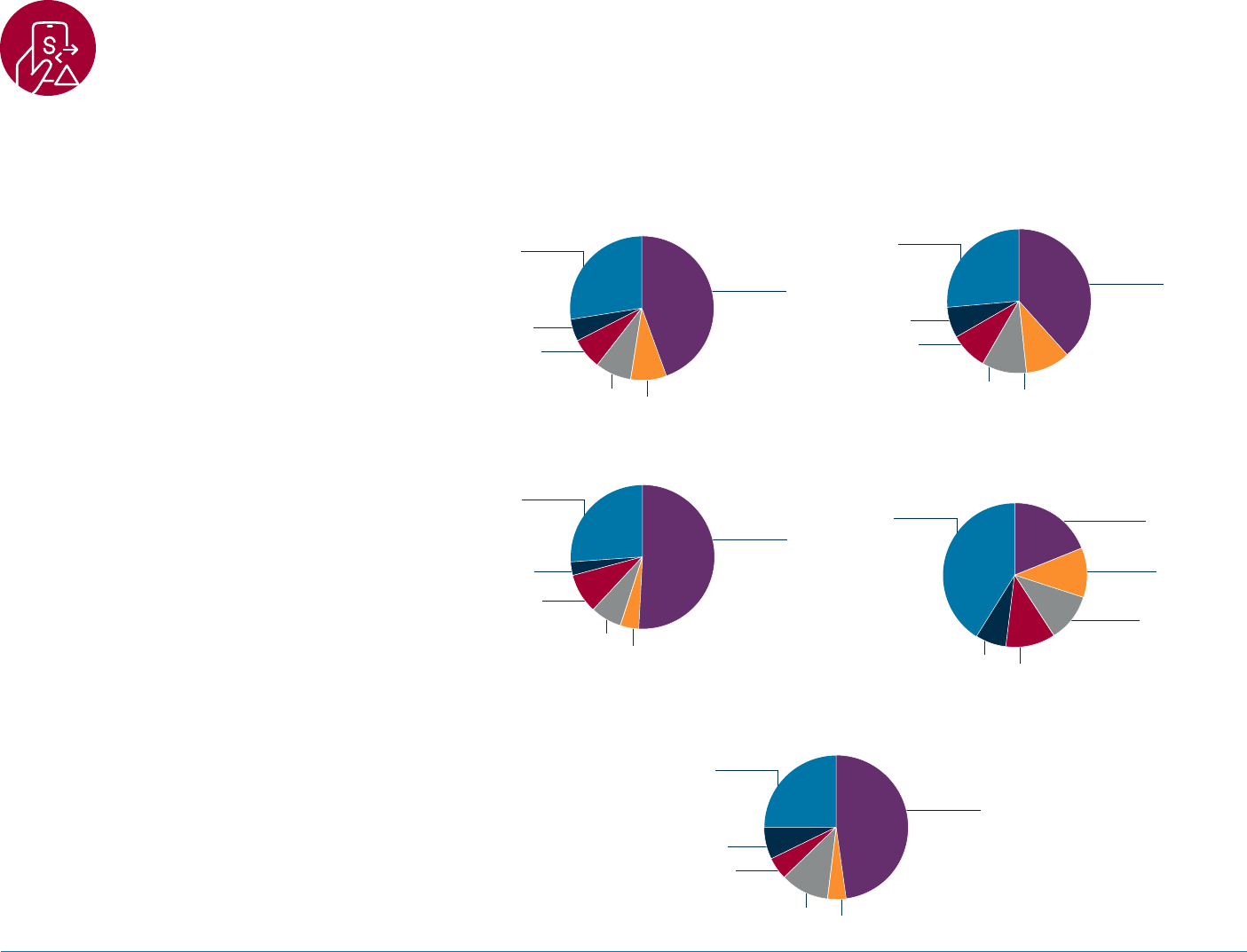
2023 AFP
®
Payments Fraud and Control Report | www.AFPonline.org 14
•
I 1
RECOUPING OF FUNDS
A Majority of Organizations Recoup
Less than 10 percent of Funds Stolen
Due to Fraud
Forty-four percent of respondents indicate
that after a successful fraud attempt, their
organizations were unable to recover the funds
lost due to the fraud. At the other end of the
spectrum, 27 percent were able to recoup 75
percent of the funds lost. Larger organizations
with annual revenue of at least $1 billion and
more than 100 payment accounts have greater
success in recovering funds lost; 41 percent of
these companies were successful in regaining
more than 75 percent of the funds lost due
to a fraud attack and only 19 percent were
unsuccessful in recouping funds. Organizations
with greater revenue and with a larger volume of
payment accounts are better equipped to detect
fraud early. They implement systems that allow
for uncovering the origins of the fraud and thus
minimize the nancial impact of a fraud attack.
Recoup of Funds After a Successful Fraud Attempt
(Percentage Distribution of Organizations that Experienced Fraud)
All
Annual Revenue At Least $1 Billion
26%
27%
More than 75%
More than 75%
38%
44%
None
None
51-75%
7%
51-75%
5%
26-50%
26-50%
8%
7%
11-25%
11-25%
Less than 10%
Less than 10%
10%
8%
10%
8%
Annual Revenue Less than $1 Billion
Annual Revenue At Least $1 Billion
and Fewer Than 26 Payment Accounts
26%
41%
19%
None
More than 75%
More than 75%
51%
None
11%
Less than 10%
51-75%
3%
26-50%
9%
11%
11-25%
11-25%
Less than 10%
7%
51-75%
26-50%
4%
7%
11%
Annual Revenue At Least $1 Billion
and Fewer Than 26 Payment Accounts
25%
More than 75%
48%
None
51-75%
7%
26-50%
5%
11-25%
Less than 10%
11%
4%
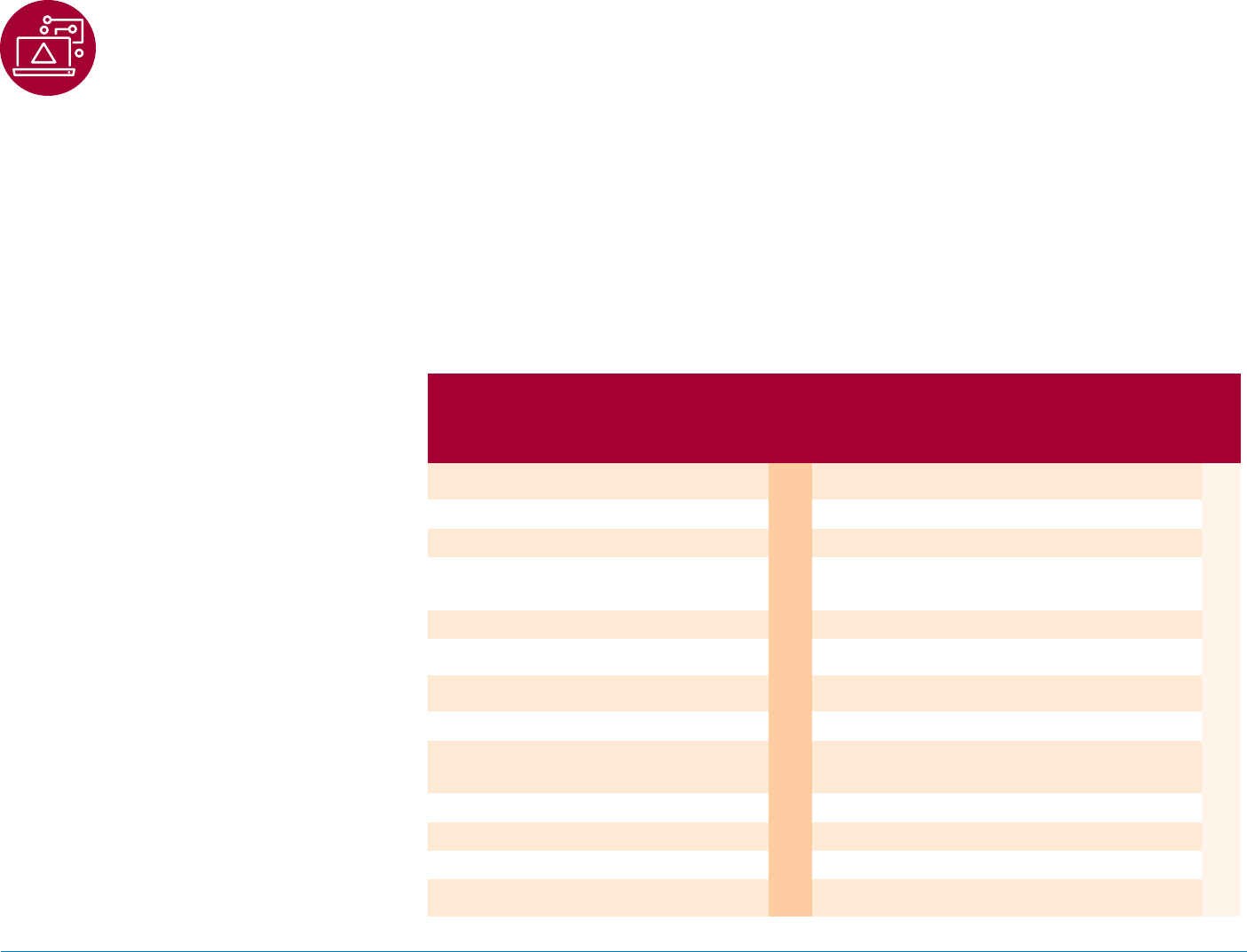
2023 AFP
®
Payments Fraud and Control Report | www.AFPonline.org 15
•
ORIGINATION OF PAYMENTS FRAUD
Majority of Payments Fraud Originate from an Individual (External to Organization) and Business Email Compromise
The most-common source of payments
fraud in 2022 was an external source or
individual (e.g., forged check, stolen card); 54
percent of nancial professionals report that
payments fraud at their companies was the
result of actions by an individual outside the
organization. This is a slight uptick from the 51
percent reported last year (for 2021).
Fifty-three percent of fraud was a result of
Business Email Compromise (BEC). In 2019, 61
percent of respondents cited BEC as a source
of fraud; in 2020 the share inched upward to
62 percent. Although BEC continued to be the
chief reason organizations were experiencing
fraud in 2021, the share of respondents that
cited BEC as a reason for payments fraud
at their companies that year decreased
slightly from previous years (55 percent).
The percentage also decreased slightly to
53 percent in 2022, and BEC was the second
most cited source of payments fraud. Larger
organizations with annual revenue of at least
$1 billion and with more than 100 payments
accounts were more susceptible to BEC scams
in 2022, while companies with less than $1
billion in annual revenue were more susceptible
to fraud committed by outside individuals.
Other sources of payments fraud included
vendor imposter (37 percent) and bad actor
who takes over an account (20 percent) – i.e.,
account takeovers via hacked system, phishing,
spyware or malware.
A larger share of companies with annual
Those respondents indicating that note that an
revenue of less than $1 billion were targeted by
insider committed fraud at their organizations
an outside individual (58 percent) than were
(3 percent) suggest that these individuals
those organizations with annual revenue of at
worked in Accounts Payable, Retail, Sales or
least $1 billion (52 percent).
Bookkeeping departments.
Sources of Attempted/Actual Payments Fraud Attempts in 2022
(Percent of Organizations)
Annual Annual Revenue Annual Revenue
Revenue Annual At Least $1 Billion At Least $1 Billion
Less Revenue and Fewer Than and More Than
2022
Than $1
Billion
At Least
$1 Billion
26 Payment
Accounts
100 Payment
Accounts
2021
Outside individual (e.g., check forged,
54% 58% 52% 49% 44% 51%
stolen card, fraudster)
Business Email Compromise (BEC Fraud) 53% 48% 58% 62% 63% 55%
Vendor imposter 37% 29% 46% 49% 48% _
Bad actor takes over an account, i.e., Account
takeover (e.g., hacking a system, adding malicious 20% 19% 23% 17% 30% 16%
code – spyware or malware from social network)
Invoice fraud 15% 9% 13% 14% 33% _
Imposter to client posing as representative from
14% 6% 3% 1% _ _
our company
Third-party or outsourcer (e.g., vendor, professional
13% 12% 15% 17% 11% 18%
services provider, business trading partner)
U.S. Postal Service Oce interference 11% 7% 13% 9% 22% _
Organized crime ring (e.g., crime spree that targets
other organizations in addition to your own, either in 8% 2% 12% 12% 11% 10%
a single city or across the country)
Ransomware 5% 1% 9% 8% 7% _
Internal party (e.g., malicious insider) 3% 2% 3% _ 7% 2%
Compromised mobile device 3% 2% 2% 3% 4% 3%
Deepfake attempt (e.g., voice and/or video
1% _ _ _ _ _
swapping, “deep voice” technology, vishing)
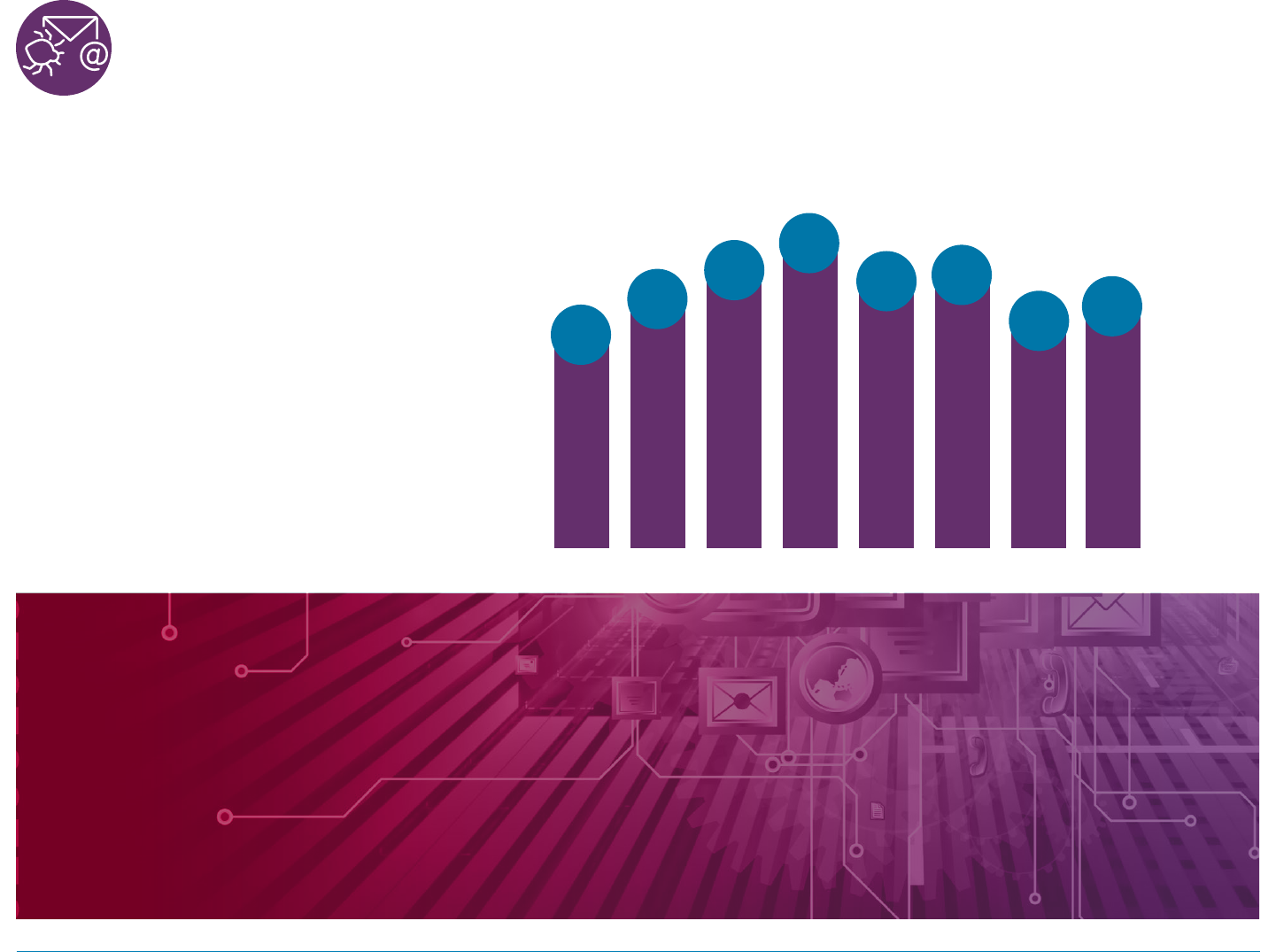
2023 AFP
®
Payments Fraud and Control Report | www.AFPonline.org 16
•
ABOUT BUSINESS EMAIL COMPROMISE
Business Email Compromise (BEC)
Events Increase Slightly
Seventy-one percent of organizations
experienced attempted or actual BEC in 2022.
This is a three-percentage point increase from
2021, but still a signicant drop from the 80
percent reported in 2018. As has been the
trend, fewer smaller organizations (with annual
revenue less than $1 billion) were targets of
BEC fraud than were larger organizations (with
annual revenue of at least $1 billion): 63 percent
compared to 82 percent. This gap has widened
since 2020 when those gures were 67 percent
and 78 percent, respectively.
Percent of Organizations that Experienced Business Email Compromise (2015-2022)
64%
74%
77%
80%
75%
76%
68%
71%
2015
2016
2017 2018
2019 2020 2021 2022
“We received a fraudulent
email impersonating an
executive ocer of the
company.
”
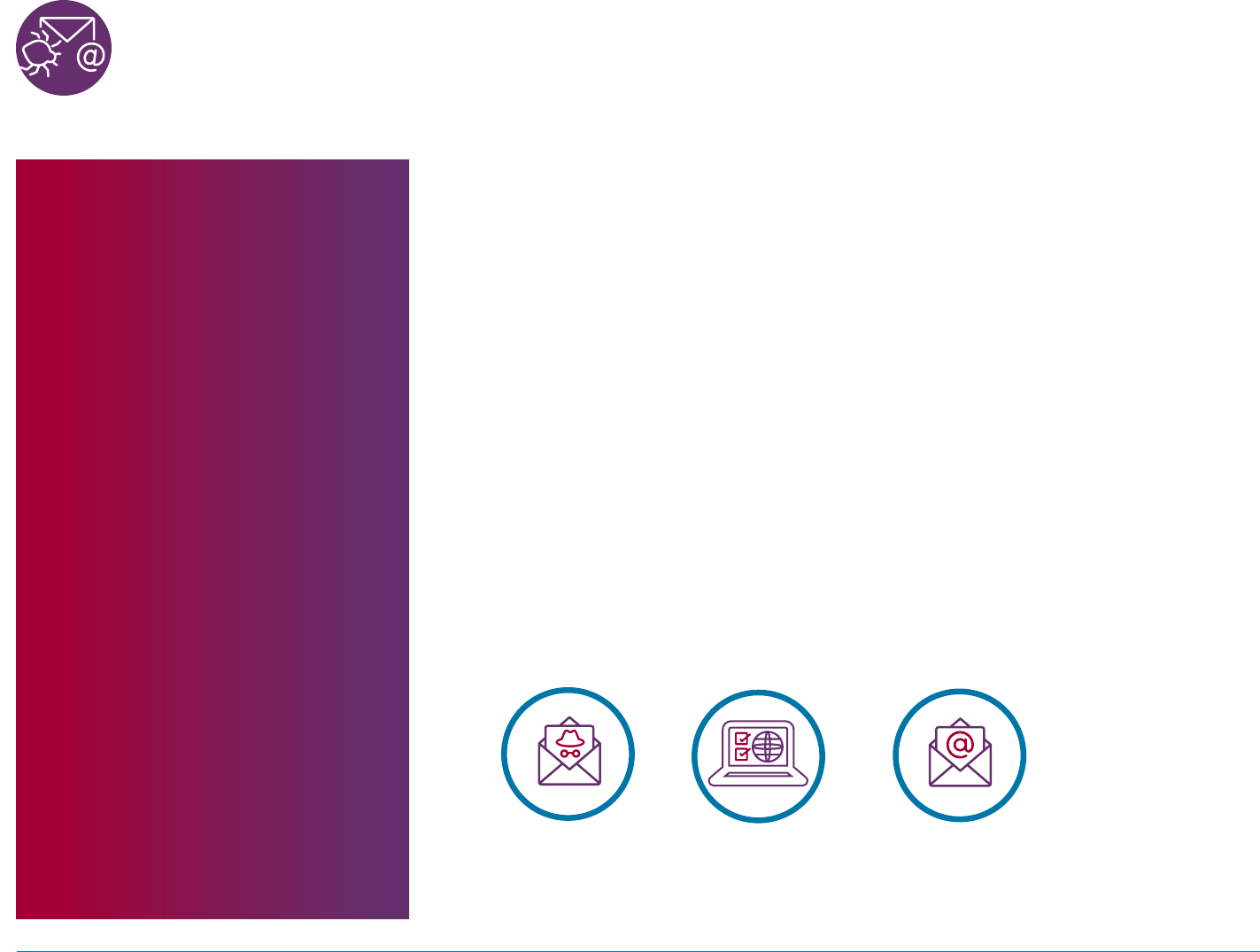
2023 AFP
®
Payments Fraud and Control Report | www.AFPonline.org 17
•
HOW CRIMINALS CARRY OUT BUSINESS EMAIL COMPROMISE SCAMS
“Fictitious email
was sent by an
imposter pretending
to be a vendor
requesting change in
Banking information.
Procurement sta
changed the banking
information not
realizing it was fraud.
The fraud was quickly
detected and our
Bank, the local Police
and the FBI were
notied. Funds were
recovered.
”
BEC Methods
Fraudsters’ approaches to BEC in 2022 were similar to those observed in previous
years. Criminals carry out BEC scams in the following ways.
— Spoof an email account or website (experienced by 73 percent of organizations).
Senders forge email header elements to trick users into thinking they are
interacting with a trusted source.
— Use a domain lookalike (experienced by 57 percent of organizations). Bad actors
register look-alike domains to confuse users into believing that they have reached
a legitimate site. Visiting these sites may lead to web trac diversion and/or
malware delivery.
— Access a compromised email account (experienced by 54 percent of
organizations). Fraudsters will sometimes use compromised email accounts to
send fraudulent “change of payment” instructions to potential victims.
Fraudulent emails may contain attachments or links that send users to illegitimate
websites or payment portals. Respondents report their rms receive these messages
through texts as well as apps, including WhatsApp.
Most Prevalent Types of Business Email Compromise Fraud in 2022
(Percent of Organizations)
73% 57%
54%
Legitimate email that was
Spoof email
Domain lookalike
taken over by a fraudster

2023 AFP
®
Payments Fraud and Control Report | www.AFPonline.org 18
•
71
BENEFICIARY VALIDATION
Beneciary Validation a Common
Practice at Most Organizations
Beneciary payment validation is an important
step in ensuring accurate and secure payments.
When asked about the validation process for
their organizations, 53 percent of respondents
report that their organizations validate
payments verbally. Some organizations choose
to outsource validation:
— Rely on nancial vendor/bank (cited by
17 percent of respondents)
— Use of an external service to validate
payment information (16 percent)
Nine percent of organizations do not validate
beneciary payment. Some organizations rely
on a combination of validation procedures.
Verbal validation is often used in conjunction
with bank letters and/or written instructions.
Validating Benefciary Payment Details
(Percentage Distribution of Organizations)
5%
Other
No, we do not validate
beneficiary payment
information
9%
16%
53%
Yes, organization uses
Yes, verbal
an external service
validation
to validate payment
information
17%
We rely on our financial
vendor/bank to do so

2023 AFP
®
Payments Fraud and Control Report | www.AFPonline.org 19
•
•
FRAUD REVIEW
Fraud Review Process
Over 60 percent of organizations conduct
fraud reviews: 36 percent conduct reviews
internally while 25 percent seek the assistance
of their bank/vendor. Another 12 percent have
plans to conduct a review within the next year.
Organizations with annual revenue of less than
$1 billion are more prone to conduct reviews
internally (42 percent) than are organizations
with annual revenue of at least $1 billion
(33 percent). In comparison, organizations
with annual revenue of at least $1 billion (30
percent) are more likely to seek the assistance
of their bank/vendor than are organizations
with less annual revenue (21 percent).
Fraud Review Process
(Percentage Distribution of Organizations)
Conduct an internal independent review
Conduct review with the assistance of bank/vendor
Planning to conduct a review within the next year
Do not conduct fraud reviews
At a majority of organizations, Treasury is
responsible for the oversight of the fraud
review process (cited by 56 percent of
respondents). Other departments that have
oversight of the fraud review process are:
— Risk (cited by 42 percent of respondents)
— Accounts Payable (37 percent)
— IT (35 percent)
A greater percentage of Risk departments at
organizations with annual revenue of at least
$1 billion and more than 100 payment accounts
are responsible for fraud review than are similar
sized companies with fewer payment accounts
(64 percent versus 42 percent).
Annual Revenue Annual Revenue
All Less Than $1 Billion At Least $1 Billion
36% 42% 33%
25% 21% 30%
12% 10% 14%
27% 27% 24%
“Attempted fraud
was discovered by our
supplier setup team
calling an established
vendor and conrming
they had not changed
banks, per the email
we received.
”
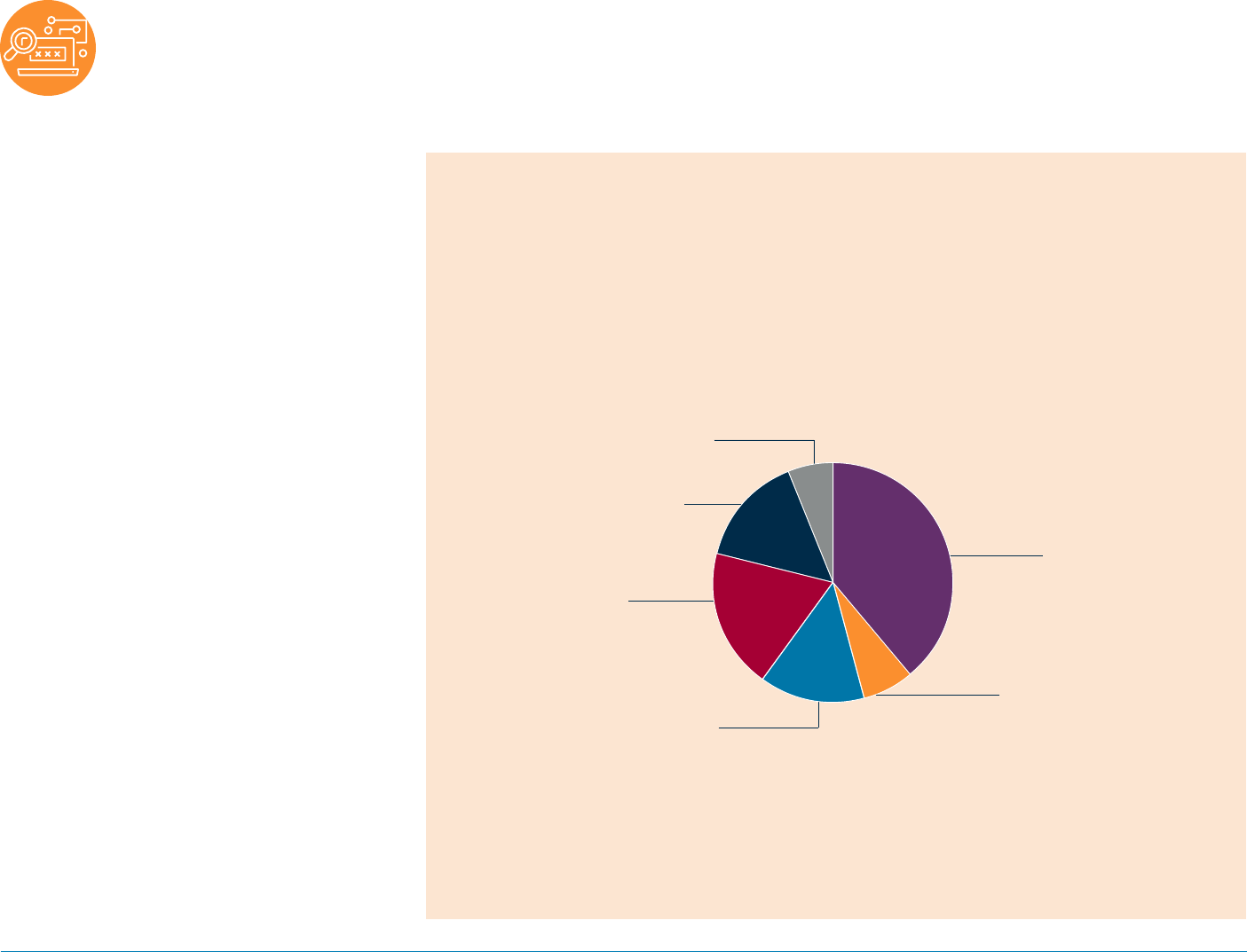
2023 AFP
®
Payments Fraud and Control Report | www.AFPonline.org 20
•
•
FRAUD REVIEW
Fraud review is conducted annually at 39
percent of organizations and conducted more
frequently at 21 percent of organizations,
either once a quarter or twice a year. Some
respondents indicate that these reviews
are conducted on an ad-hoc basis at their
organizations, and 19 percent are unsure about
the frequency that fraud reviews are conducted
at their companies.
Frequency of Fraud Review
(Percentage Distribution of Organizations)
Other: • Monthly • Daily
6%
Ad-Hoc
15%
Annually
39%
Unsure
19%
Bi-annually
7%
Quarterly
14%

2023 AFP
®
Payments Fraud and Control Report | www.AFPonline.org 21
CONCLUSION
There are clear signs that payments fraud
is abating. After record levels of fraud in
both 2018 and 2019 – peaking at over 80
percent – the share of organizations that
were targets of attempted/actual payments
fraud has been on the decline since. Checks
continue to be a prime target for criminals, but
with the declining use of checks – and very
eective tools to stop check fraud – fraudsters
have been having less success. According to
the 2022 AFP® Electronic Payments Report,
33 percent of organizations used checks
for business-to-business payments in 2022,
while in 2019, 43 percent of companies did
so. Because many organizations are unable
to eliminate the use of checks completely,
fraudsters continue to be able to use checks
to target organizations, although perhaps to a
lesser extent. Unfortunately, criminals are not
easily discouraged; advanced software and
social engineering enables them to attempt
payments fraud through other payment
methods such as wires and ACH payments.
Emails are frequently used to inltrate
company networks. In the current business
environment, employees are likely physically
distanced; consequently, verbal verication of
payment requests become more challenging.
Unless formal systems are in place and
ingrained in employees, fraud can often
occur. Business leaders have made training
and education focused on detecting phishing
attempts a priority for employees. Indeed,
many organizations do not restrict training to
just the nance teams, but instead require that
employees throughout the entire organization
be cognizant about fraud attempts via email
and be able to identify them. Employees who
inadvertently open emails multiple times which
are either actual fraud attacks or simulated
phishing attempts are reprimanded, and
in some extreme cases may be terminated
from their jobs. Despite extensive measures
implemented to prevent Business Email
Compromise, it continues to be one of the
primary sources of fraud at organizations.
The share of organizations experiencing
corporate/commercial credit card fraud
increased 10 percentage points, from 26 percent
in 2021 to 36 percent in 2022. This uptick is
similar to the incidence of credit card fraud
reported prior to the COVID-19 pandemic in
2019 – 34 percent. As a consequence of the
pandemic, organizations reduced workforce,
furloughed employees and trimmed
discretionary spending by restricting travel. The
use of corporate/commercial credit cards also
decreased, resulting in fewer card transactions
and, therefore, less fraud via that payment
method than was reported in 2020 and 2021. As
employers are recruiting again and organizations
have eased restrictions on travel and other
discretionary spending, corporate/commercial
credit cards are being used more extensively,
resulting in greater incidence of fraud being
reported via those payment methods.
Call backs, daily reconciliations and verbal
verications are methods many organizations
are using in their eorts to minimize the
occurrence of fraud via payment methods.
Treasury and nance leaders are increasingly
reaching out to banking partners for guidance
in reporting and managing fraud. Depending
on the extent of the fraud, practitioners are
also reporting fraud to police and other law
enforcement agencies.
In the past, actual nancial losses from
payments fraud attacks were not damaging;
that continued to be the case in 2022. However,
this is not a reason for companies to lose focus
on preventing fraud. While loss of condential
and personnel information does not directly
impact an organization’s bottom line, extensive
eort and resources are required to resolve
such situations.
It is evident that the steps business leaders
are taking to prevent fraud are having success.
However, historical payments fraud survey data
show dierent types of fraud emerge in the
wake of such success. Fraudsters are relentless
and will continue to target organizations and
any vulnerable payment networks. Therefore,
treasury leaders will want to ensure that they
are prepared for the next type of fraud that is
in the works. It is vital that treasury and nance
professionals stay ahead of the perpetrators
so that fraud attacks do not interrupt business
operations and organizations’ nancial losses
remain at a minimum.
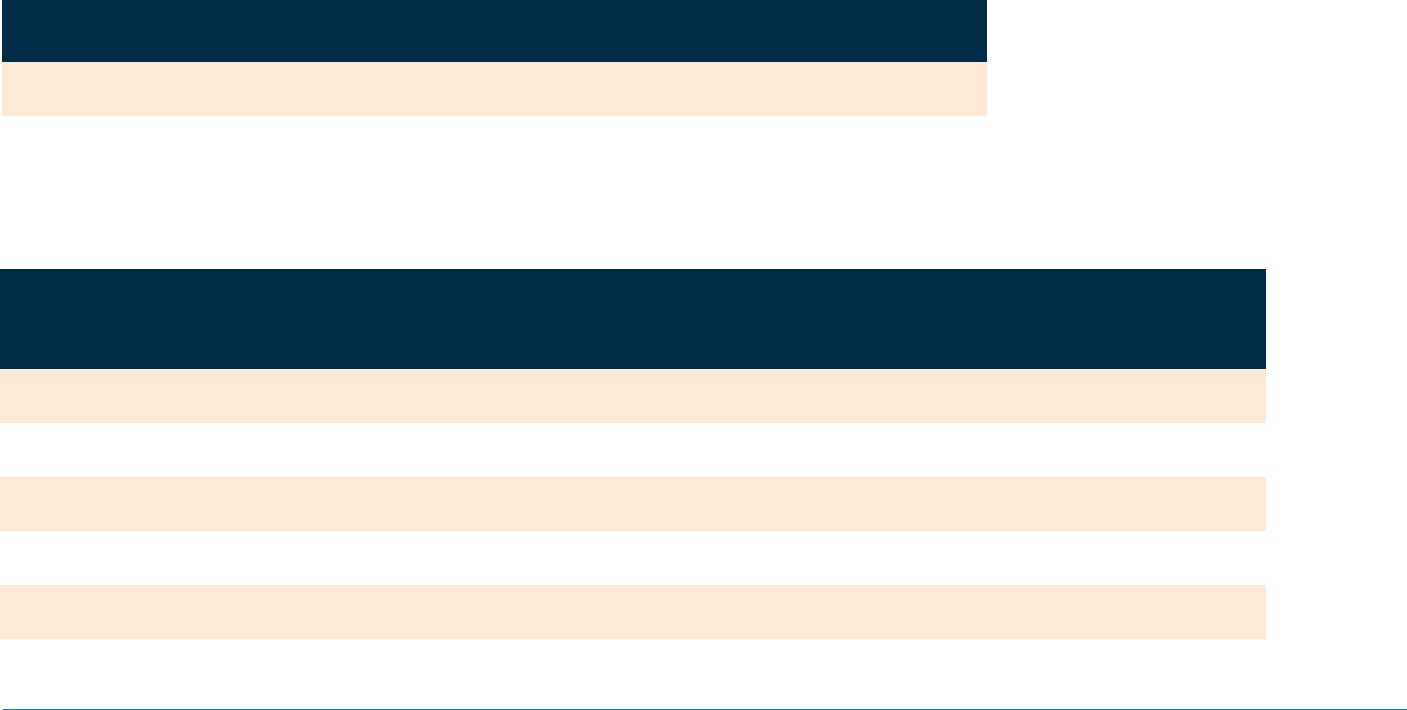
2023 AFP
®
Payments Fraud and Control Report | www.AFPonline.org 22
ABOUT SURVEY RESPONDENTS
In January 2023, the Research Department of
the Association for Financial Professionals®
(AFP) surveyed treasury practitioner members
and prospects. The survey was sent to treasury
professionals with the following job titles: Vice
President of Treasury, Treasurer, Assistant
Treasurer, Director of Treasury, Treasury Manager,
Type of Organization’s Payment Transactions
(Percentage Distribution of Organizations)
Primarily consumers
When making payments 9%
When receiving payments 21%
Number of Payment Accounts Maintained
(Percentage Distribution of Organizations)
Director of Treasury and Finance, Senior Treasury
Analyst, and Cash Manager. A total of 471
responses were received from practitioners, which
form the basis of the report.
AFP thanks J.P. Morgan for underwriting the
2023 AFP® Payments Fraud and Control Survey.
Split between
consumers and businesses Primarily businesses
27% 64%
29% 50%
Both the questionnaire design and the nal
report, along with its content and conclusions,
are the sole responsibilities of the AFP Research
Department. The following tables provide a prole
of the survey respondents, including payment
types used and accepted.
Annual Revenue At Least $1 Annual Revenue At Least
Annual Revenue Less Than Annual Revenue At Least Billion and Fewer Than 26 $1 Billion and More Than 100
All $1 Billion $1 Billion Payment Accounts PaymentAccounts
Fewer than 5 24% 32% 17% 28% _
5-9 23% 24% 23% 38% _
10-25 19% 18% 21% 34% _
2
6-50 9% 10% 8% _ _
5
1-100 10% 6% 12% _ _
More than 100 15% 9% 19% _ 100%
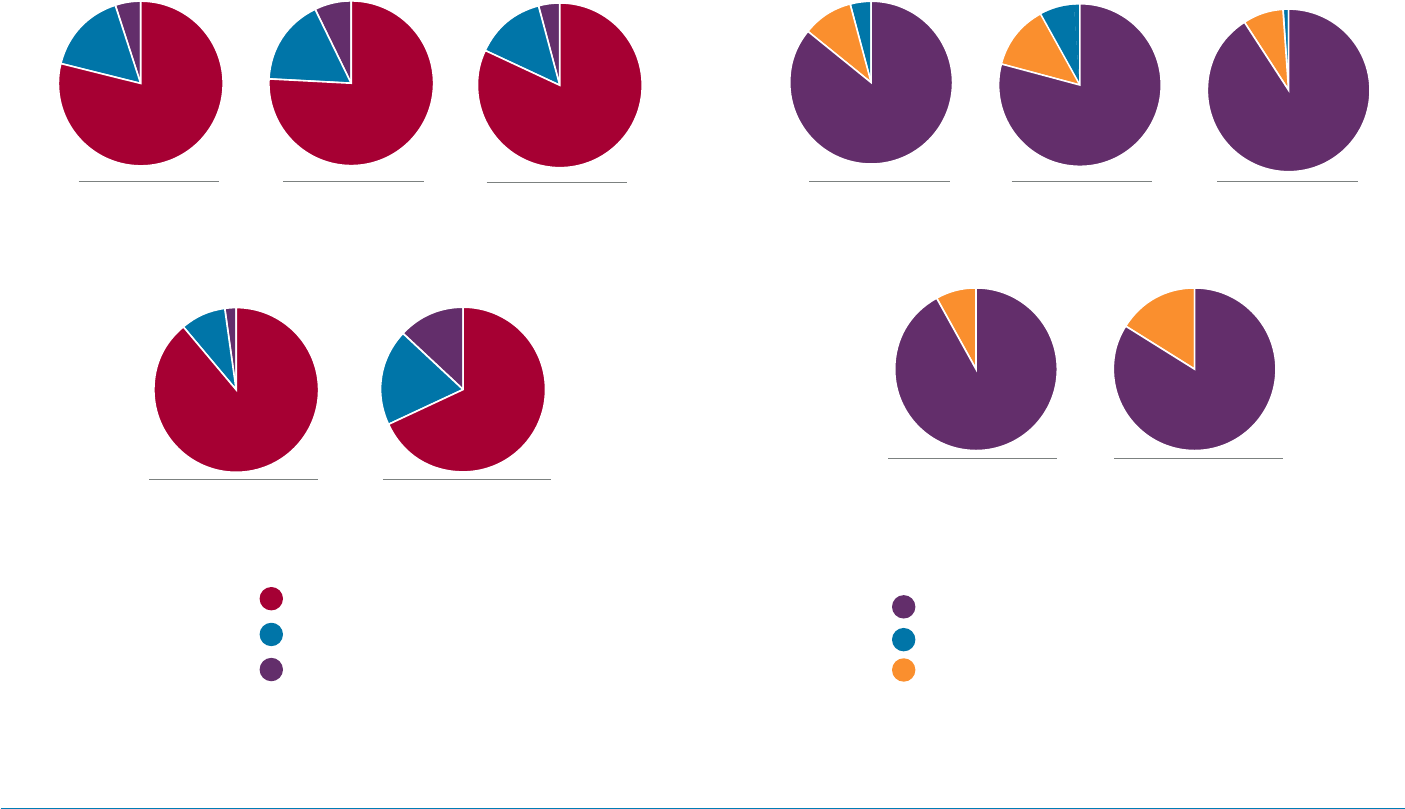
2023 AFP
®
Payments Fraud and Control Report | www.AFPonline.org 23
•
•
•
•
•
•
ABOUT SURVEY RESPONDENTS
Methods to Maintain Payments Accounts Application of Accounts Controls
(Percentage Distribution of Organizations) (Percentage Distribution of Organizations)
79%
76%
82%
17%
14%
5%
7%
4%
85%
5%
80%
7%
2%
16%
10% 13%
All
Annual Revenue
Annual Revenue
All
Annual Revenue
Less Than $1 Billion
At Least $1 Billion
Less Than $1 Billion
8%
16%
2%
13%
92%
Annual Revenue
At Least $1 Billion
and Fewer Than 26
Payment Accounts
Centralized
Yes, applied to all accounts in all areas
Decentralized
Not applied to all accounts
Other
Yes, applied to all accounts but in select areas
90%
8%
Annual Revenue
At Least $1 Billion
89%
9%
Annual Revenue At Least
$1 Billion and Fewer Than
26 Payment Accounts
69%
19%
Annual Revenue At Least
$1 Billion and More Than
100 Payment Accounts
84%
Annual Revenue At
Least $1 Billion and
More Than 100 Pay-
ment Accounts
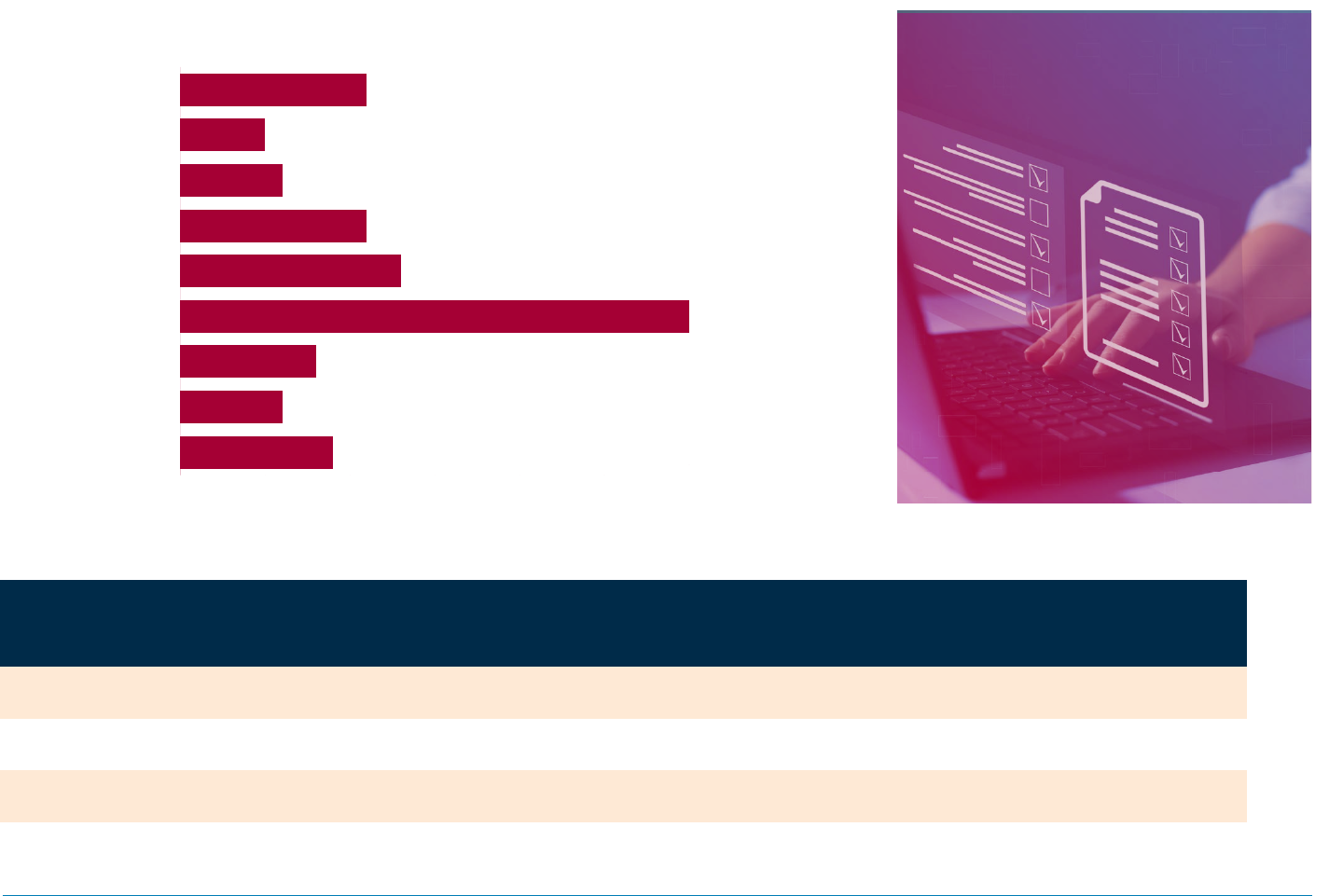
2023 AFP
®
Payments Fraud and Control Report | www.AFPonline.org 24
ABOUT SURVEY RESPONDENTS
Annual Revenue (USD)
(Percentage Distribution of Organizations)
Under $50 million
11%
$50-99.9 million
5%
6%
$100-249.9 million
$250-499.9 million
11%
$500-999.9 million
13%
$1-4.9 billion
30%
$5-9.9 billion
8%
$10-20 billion
6%
Over $20 billion
9%
Organization’s Ownership Type
(Percentage Distribution of Organizations)
Annual Revenue At Least Annual Revenue At Least
Annual Revenue Less Annual Revenue $1 Billion and Fewer Than $1 Billion and More Than
All Than $1 Billion At Least $1 Billion 26 Payment Accounts 100 PaymentAccounts
Publicly owned 35% 15% 51% 49% 59%
Privately held 41% 53% 30% 33% 28%
Non-profit (not-for-profit) 16% 22% 11% 8% 6%
Government (or government owned entity) 9% 10% 8% 10% 6%
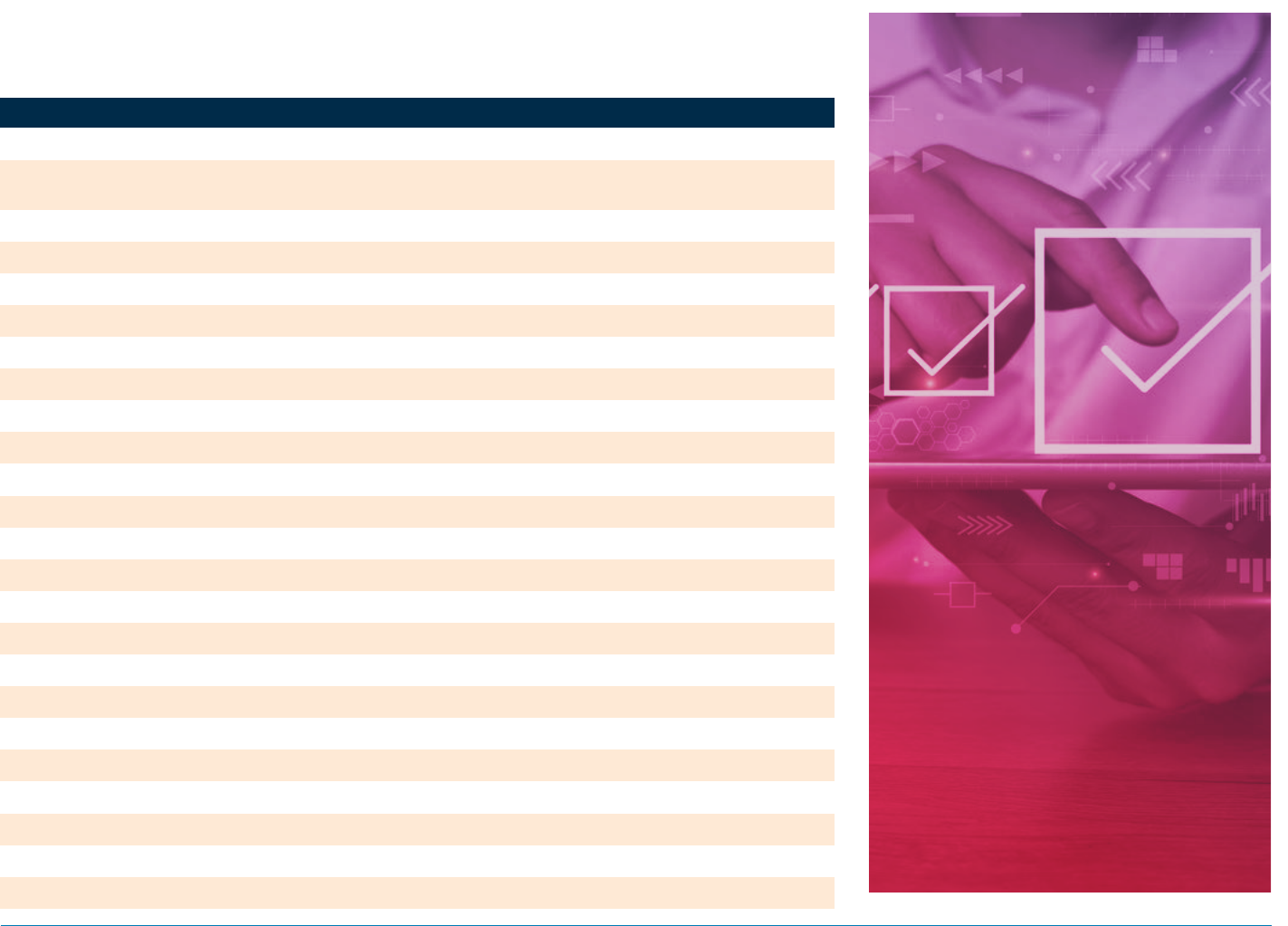
2023 AFP
®
Payments Fraud and Control Report | www.AFPonline.org 25
ABOUT SURVEY RESPONDENTS
Industry Classifcation
(Percentage Distribution of Organizations)
ALL
Agricultural, Forestry, Fishing & Hunting _
Administrative Support/Business
services/Consulting
1%
Banking/Financial services 14%
Construction 4%
E-Commerce 2%
Education (K-12, public or private institution) 2%
University or other Higher Education 4%
Energy 5%
Government 6%
Health Care and Social Assistance 9%
Hospitality/Travel/Food Services 2%
Insurance 5%
Manufacturing 17%
Mining _
Non-profit 5%
Petroleum 1%
Professional/Scientific/Technical Services 3%
Real estate/Rental/Leasing 4%
Retail Trade 4%
Wholesale Distribution 5%
Software/Technology 2%
Telecommunications/Media 1%
Transportation and Warehousing 3%
Utilities 2%

2023 AFP
®
Payments Fraud and Control Report | www.AFPonline.org 26
AFP® 2023 Payments Fraud and Control Report
Copyright © 2023 by the Association for Financial Professionals (AFP).
All Rights Reserved.
This work is intended solely for the personal and noncommercial use of the reader. All other uses of this work, or
the information included therein, is strictly prohibited absent prior express written consent of the Association for
Financial Professionals. The AFP 2023 Payments Fraud and Control Report the information included therein, may
not be reproduced, publicly displayed, or transmitted in any form or by any means, electronic or mechanical,
including but not limited to photocopy, recording, dissemination through online networks or through any other
information storage or retrieval system known now or in the future, without the express written permission
of the Association for Financial Professionals. In addition, this work may not be embedded in or distributed
through commercial software or applications without appropriate licensing agreements with the Association for
Financial Professionals.
Each violation of this copyright notice or the copyright owner’s other rights, may result in legal action by the
copyright owner and enforcement of the owner’s rights to the full extent permitted by law, which may include
nancial penalties of up to $150,000 per violation.
This publication is not intended to oer or provide accounting, legal or other professional advice. The
Association for Financial Professionals recommends that you seek accounting, legal or other professional advice
as may be necessary based on your knowledge of the subject matter.
All inquiries should be addressed to:
Association for Financial Professionals
4520 East West Highway, Suite 800
Bethesda, MD 20814
Web: www.AFPonline.org
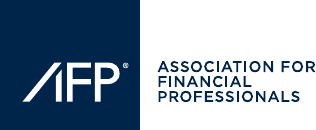
ASSOCIATION FOR
FINANCIAL
PROFESSIONALS
AFP Research
AFP Research provides nancial professionals with proprietary and timely research that
drives business performance. AFP Research draws on the knowledge of the Association’s
members and its subject matter experts in areas that include bank relationship
management, risk management, payments, FP&A and nancial accounting and reporting.
Studies report on a variety of topics, including AFP’s annual compensation survey, are
available online at www.AFPonline.org/research.
About AFP®
Headquartered outside of Washington, D.C. and located regionally in Singapore, the
Association for Financial Professionals (AFP) is the professional society committed to
advancing the success of treasury and nance members and their organizations. AFP
established and administers the Certied Treasury Professional® and Certied Corporate
FP&A Professional® credentials, which set standards of excellence in treasury and nance.
Each year, AFP hosts the largest networking conference worldwide for more than 7,000
corporate nancial professionals.
4520 East-West Highway, Suite 800
Bethesda, MD 20814
+1 301.907.2862
www.AFPonline.org

2023 AFP
®
Payments Fraud and Control Report | www.AFPonline.org 28
The threat of
fraud is real
The question is, are you ready?
As fraud becomes more sophisticated, so
does our approach to security. Get the
critical information and advanced tools
you need to safeguard your organization.
LEARN MORE
or contact your J.P. Morgan
representative today.
© 2023 JPMorgan Chase & Co. All rights reserved. JPMorgan Chase Bank, N.A. Member FDIC. Visit jpmorgan.com/cb-disclaimer for full
disclosures and disclaimers related to this content. 1216486
